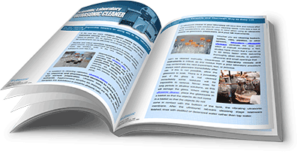Posts by Rachel Kohn
Primer on Laboratory Refrigerator & Equipment Validation
A controlled environment is critical to maintaining the potency and safety of pharmaceutical products across a supply chain stretching between R&D laboratories, manufacturing facilities, transportation and storage at healthcare facilities. Examples of controlled environments include laboratory refrigerators, laboratory freezers, blood bank refrigerators, chromatography refrigerators, laboratory incubators, stability chambers and temperature test chambers.
Equipment such as this as manufactured by Norlake Scientific and offered by Tovatech is designed and constructed to comply with standards developed and promulgated by the FDA, the AABB, the Red Cross and other agencies. Once the equipment is purchased, however, the facility operator assumes the responsibility of assuring it is installed and maintained according to FDA and related guidelines.… Read the rest
A Primer on Drug Stability Testing in Stability Chambers
As described by the FDA, stability testing provides evidence of the effect of time and environmental factors on the quality of pharmaceuticals and medicinal products. Such factors include light, humidity and temperature. Stability tests also establish a re-test period for the drug substance or a shelf life for the medicinal product along with recommended storage conditions.
Stability tests are conducted in validated stability chambers such as manufactured by Norlake for pharmaceutical (ICH), biological (BOD), scientific and laboratory applications. These tests, which subject the product samples to variations in temperature and humidity, are conducted during drug product development as well as once a candidate drug reaches use and are governed by current good manufacturing practices (cGMPs). They are regulated in the U.S. by 21 CFR Part 211 Section 166. (www.gmp1st.com/drreg.htm#211.166)
While these tests are conducted in stability test chambers, it is not simply a matter of buying a chamber and plugging … Read the rest
How to Use an Ultrasonic Clock Cleaner
Another interesting note from a customer:
“Don’t knock my smock or I’ll clean your clock” was a panel line in a Calvin and Hobbes cartoon strip. As one who repairs antique clocks I checked the origin of the phrase and found that it usually signifies a violent encounter. Not a good idea when dealing with a customer’s heirloom time keeper.
Most of the clocks I clean and repair have brass works – the gears and frames – along with steel parts such as verges, spindles, spacers and springs. In my early days cleaning these parts after disassembly entailed dipping them into a solvent and using a soft brush to work away grime and dried lubricants. A messy process indeed, and not that satisfactory in terms of results.
An ultrasonic cleaner has proven far more satisfactory, but when using this technology for clocks and watches care must be taken not to … Read the rest
How to Use a Precision Scale for Check Weighing
“Net weight one pound” it says on a bag of potato chips. You used to be able to buy a pound of coffee but now while the cans look the same the weights vary. One brand notes 11.5 ounces, another 10.3 ounces. Why is this? More than that, how do we know the can really contains 10.3 ounces of java? It is a conundrum we have to tolerate.
Joking aside, accuracy in weighing or in counting is no laughing matter when it comes to complying with rules governing net content and average weights. It is also important from a cost management perspective. While variances in potato chip and coffee weight is not a serious safety concern, putting more in the bag or can than called for is a cost management issue. Accuracy is a safety issue when it comes to pharmaceutical dosages and similar critical applications. Here is how precision … Read the rest
3 Good Questions About Precision Scales & Analytical Balances
Digital scales and balances are precision instruments. People using these instruments should be able to answer these questions:
1. How secure is your weighing data?
2. How accurate are your scales?
3. What is the degree of protection from dust and moisture?
How secure is your weighing data?
An answer can be found in Kern’s 32 bit software for Windows 95/98/NT/XP. It communicates between balances and programs such as Excel, Word, Access and others via a serial interface. Weight increments are inserted by the touch of a key or on a time-controlled basis to the current cursor location. This eliminates typing errors that may occur during manual inputting of weight increments.
Graphical displays of values and data … Read the rest
How to Count on Your Digital Counting Scales
There’s no doubt that using digital counting scales can save time and money. Easier to explain is time, because these accurate tools can do in seconds or minutes what it would take hours to count by hand. That in itself saves time, but if the scales are also used in inventory control they can help identify unusual movement of product out of storage. Who is taking the product and why?
As good as they are – and products such as Kern’s CXB counting scale are examples – when using them one must keep in mind the old computer admonition “garbage in, garbage out.”
These scales can weigh but they can’t think. This requires operators to establish uniformity of weight across the products being weighed. What can throw this off? Well, some products in the batch may have burrs or other imperfections that will lead to inaccurate counts. In fact, anything … Read the rest
